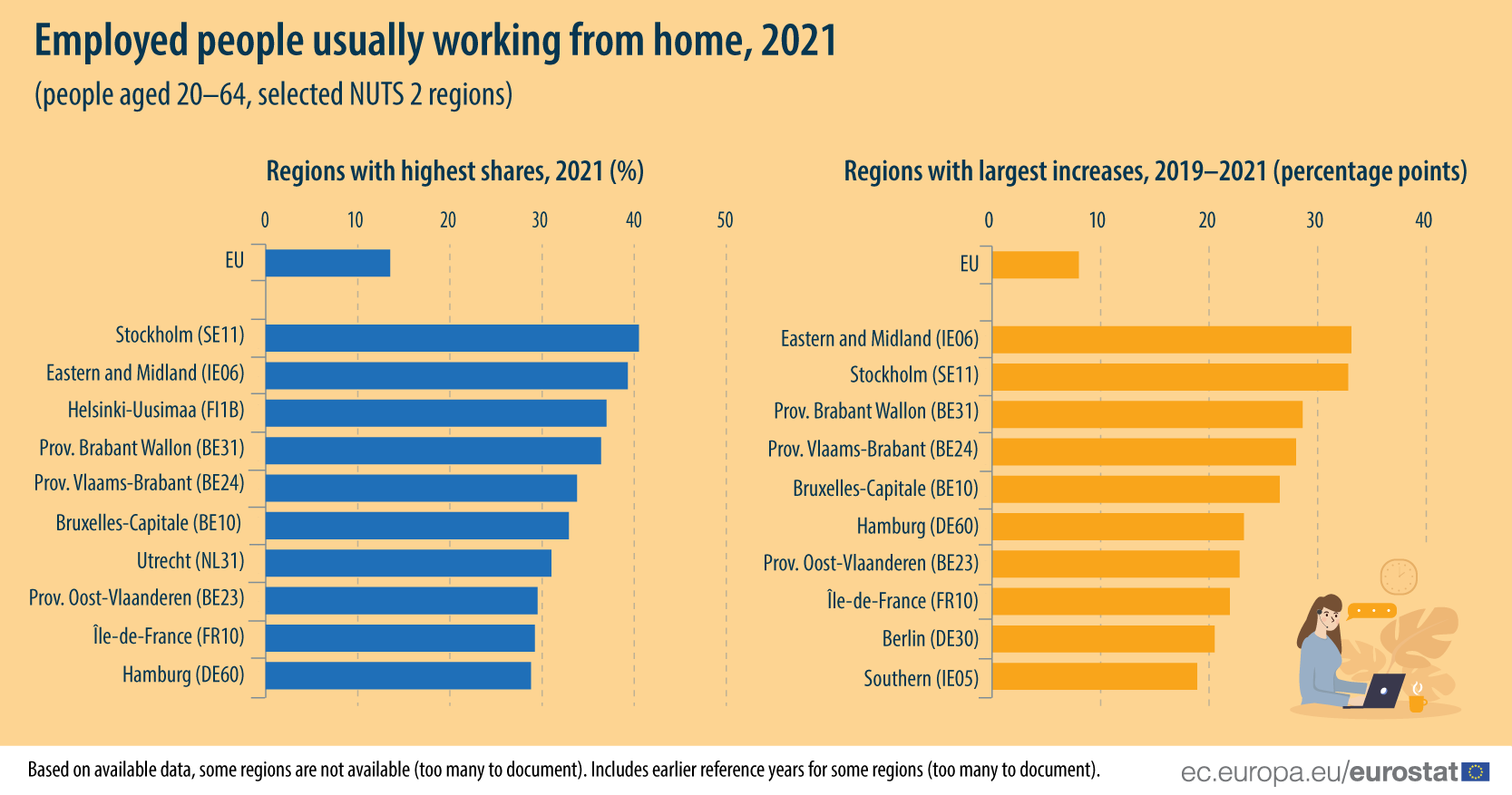November 10, 2022
During the COVID-19 crisis, a large proportion of employed people was faced with changing patterns of work – including working from home. In 2019, approximately 1 in 20 (5.5%) employed people aged 20–64 years in the EU usually worked from home. The impact of the COVID-19 crisis was apparent as this share more than doubled in 2020 to 12.3% (+6.8 percentage points; pp). To a lesser extent, there was a further increase in the share of people usually working from home in 2021, as it reached 13.5% (+1.2 pp).
The regional distribution of working from home in 2021 was somewhat skewed, insofar as there were 95 NUTS level 2 regions where this share was above the EU average, compared with 140 regions that recorded lower than average shares.
Two in five employees in Stockholm usually worked from home
In Stockholm – the capital region of Sweden – two out of every five employed people (or 40.5%) were usually working from home in 2021. This was the highest share across NUTS level 2 regions, with two more capital regions recording the next highest shares: Eastern and Midland in Ireland (39.3% of employed people) and Helsinki-Uusimaa in Finland (37.0%).
Increases in employed people usually working from home
The share of employed people in the EU usually working from home rose by 8.0 percentage points between 2019 and 2021. Perhaps the most striking aspect concerns the rapid increase in the proportion of employed people who were working from home in several capital and urban regions.
In Eastern and Midland in Ireland and in Stockholm in Sweden, the increases were +33.1 pp and +32.8 pp, respectively. In other words, when comparing the pre-pandemic situation in 2019 with the situation in 2021, the share of employed people usually working from home increased in these two capital regions by an amount that was more than four times as high as the increase for the EU average.
Source: Eurostat
Legal Notice: The information in this article is intended for information purposes only. It is not intended for professional information purposes specific to a person or an institution. Every institution has different requirements because of its own circumstances even though they bear a resemblance to each other. Consequently, it is your interest to consult on an expert before taking a decision based on information stated in this article and putting into practice. Neither Karen Audit nor related person or institutions are not responsible for any damages or losses that might occur in consequence of the use of the information in this article by private or formal, real or legal person and institutions.







